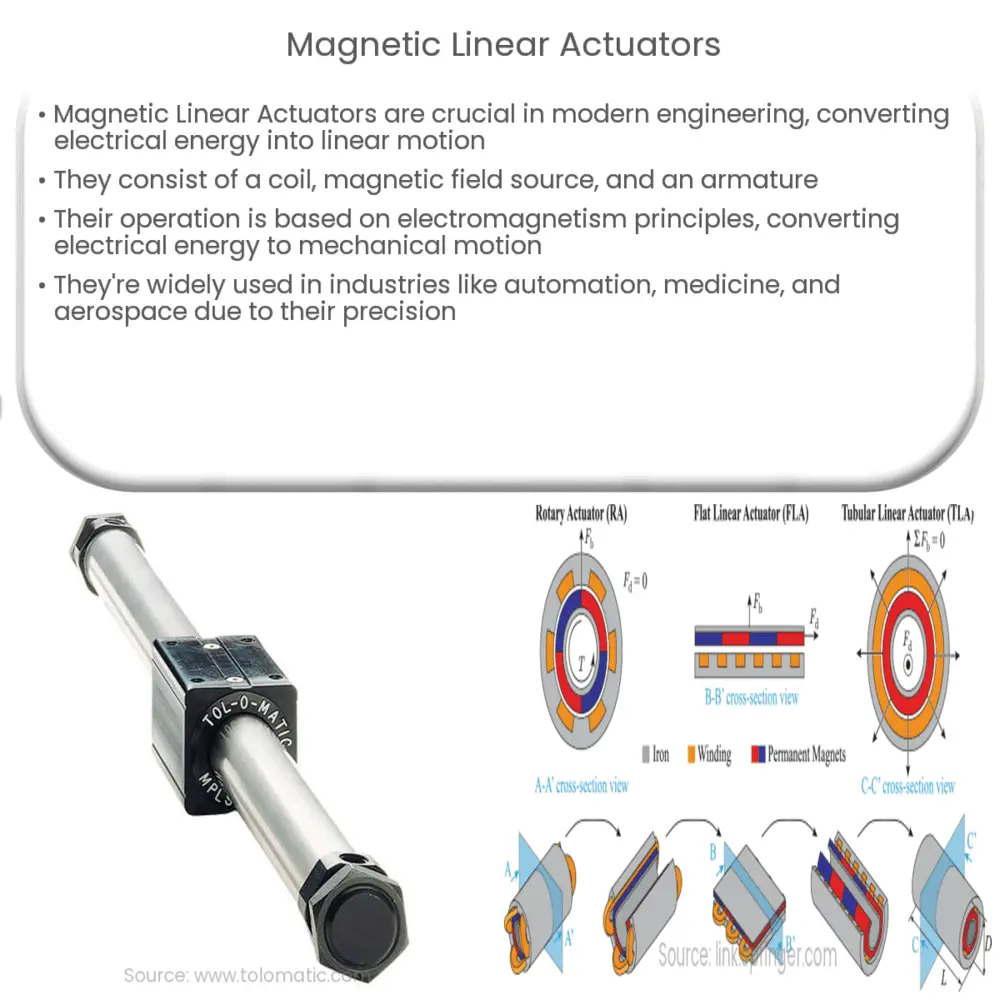Explore the principles, components, applications, and future of Magnetic Linear Actuators in this comprehensive guide.

Understanding Magnetic Linear Actuators
Magnetic Linear Actuators are a vital component in modern engineering and design. These actuators, which convert electrical energy into linear motion, play a significant role in a variety of applications ranging from robotics to medical devices. The core principle behind these devices is the interaction between magnetic fields and electrical currents.
Components and Working Principle of Magnetic Linear Actuators
The primary components of a Magnetic Linear Actuator include a coil, magnetic field source (usually a magnet or a group of magnets), and a movable metal part known as the armature. The coil is a key component as it is responsible for converting the electrical energy into a magnetic field.
- Coil: When an electric current is applied to the coil, it generates a magnetic field. The direction of this field is dependent on the direction of the current flow. This magnetic field interacts with the field of the magnet(s) in the actuator.
- Magnet: The magnet or group of magnets provide a constant magnetic field inside the actuator. This field interacts with the field produced by the coil to generate motion.
- Armature: The armature is a movable part that is attracted or repelled depending on the magnetic field produced by the coil. Its motion is linear, i.e., along a straight line, which is how the actuator gets its name.
The operation of the Magnetic Linear Actuator is rooted in the basic principles of electromagnetism. According to Ampere’s Law1, an electrical current produces a magnetic field around it. Similarly, according to Lenz’s Law2, a change in the magnetic field within a closed-loop of wire induces an electromotive force (EMF) in the wire. A Magnetic Linear Actuator uses these principles to convert electrical energy into linear mechanical motion.
Applications of Magnetic Linear Actuators
Magnetic Linear Actuators are used in various industries and applications. In the world of automation and robotics, they enable precise control over the movement of mechanical parts. In medical devices, they are used to drive the movement of parts in a controlled and safe manner, such as in surgical robotics. They also find use in the aerospace industry, where they are used for tasks like adjusting the flaps on an aircraft’s wings. Despite these varying applications, the underlying working principle remains the same.
Advantages and Limitations of Magnetic Linear Actuators
Magnetic Linear Actuators come with several advantages, chief among them being precision and control. Their ability to provide linear motion enables precise positional control, making them ideal for applications requiring high levels of accuracy. They are also known for their high-speed operation and long operational lifespan, given the minimal wear and tear due to the absence of mechanical contact between moving parts.
Despite their numerous benefits, Magnetic Linear Actuators are not without their limitations. They can consume significant power, particularly in applications requiring continuous motion. Their efficiency can also decrease in the presence of high heat or in environments with heavy magnetic interference.
Future of Magnetic Linear Actuators
As we move further into the 21st century, the demand for more efficient, compact, and precise motion control systems continues to rise. Magnetic Linear Actuators, with ongoing advancements in materials science and electrical engineering, are well-positioned to meet this demand. High-efficiency designs and materials capable of withstanding greater thermal and magnetic stresses are being explored to enhance the performance and versatility of these devices. In addition, research is underway to make these actuators more energy-efficient, broadening their application scope and potential impact on various industries.
Conclusion
In conclusion, Magnetic Linear Actuators represent a key technology in the field of electromechanical systems. By harnessing the principles of electromagnetism, these devices convert electrical energy into precise linear motion, enabling a myriad of applications across numerous industries. Though they have certain limitations, ongoing research and development promise to overcome these challenges and expand the potential uses of these actuators. The future of Magnetic Linear Actuators shines bright as they continue to drive innovation and enhance operational efficiency in the realms of automation, robotics, medicine, aerospace, and beyond.

